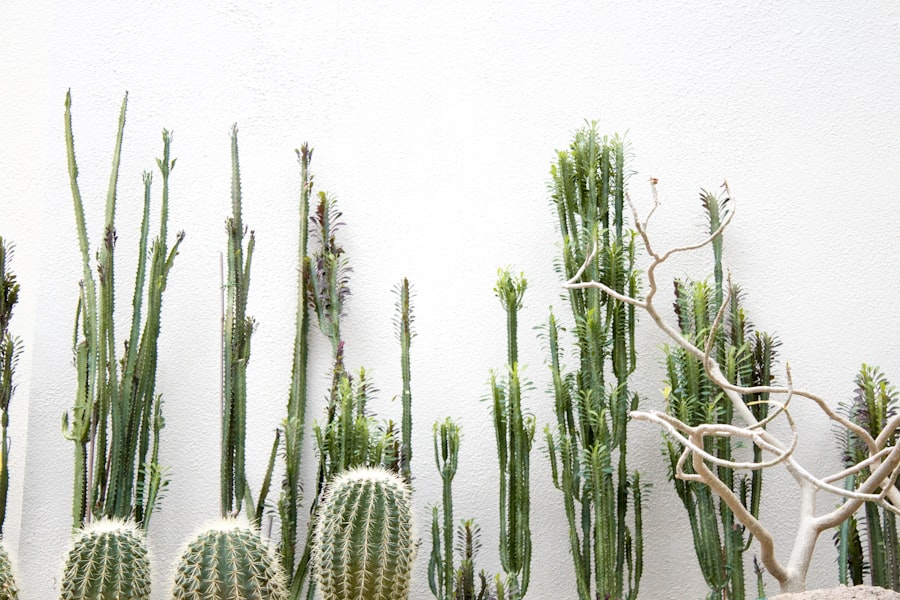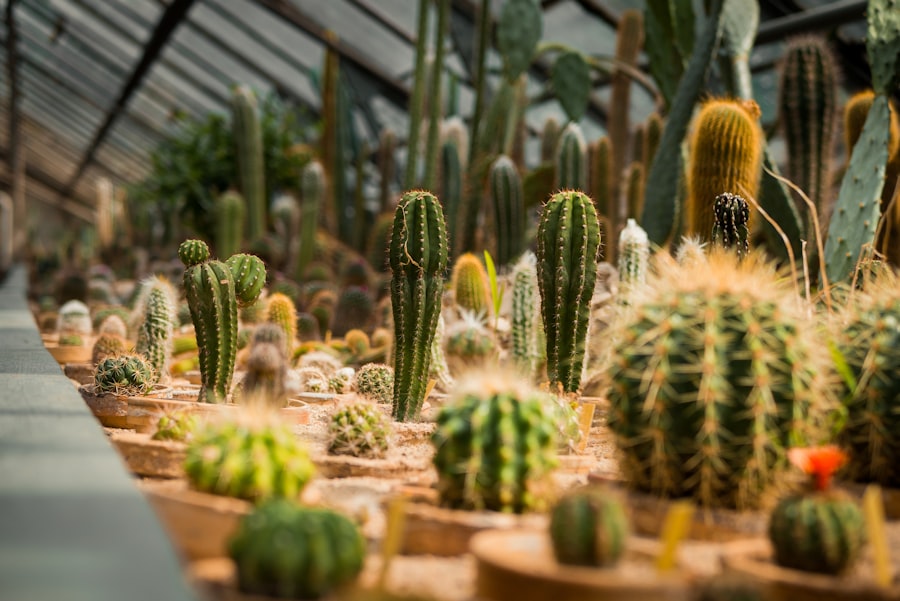The Bolivian Torch Cactus, scientifically known as Echinopsis lageniformis, is a striking species native to the high-altitude regions of Bolivia. This cactus is characterized by its tall, columnar shape, which can reach heights of up to 10 feet in its natural habitat. The plant features a series of prominent ribs and spines that give it a distinctive appearance, making it a popular choice among cactus enthusiasts and collectors.
The Bolivian Torch is particularly notable for its vibrant flowers, which bloom in the summer months, displaying a stunning array of colors ranging from white to pink and even red. These flowers are not only visually appealing but also emit a sweet fragrance that attracts pollinators such as bees and hummingbirds. In addition to its aesthetic appeal, the Bolivian Torch Cactus has gained attention for its psychoactive properties.
The cactus contains mescaline, a naturally occurring psychedelic compound that has been used for centuries in traditional Andean rituals and ceremonies. This aspect of the cactus has led to increased interest in its cultivation and use, both for ornamental purposes and for those seeking to explore its psychoactive effects. However, it is essential to approach this aspect with caution and respect, as the use of mescaline is subject to legal restrictions in many countries.
Understanding the cultural significance and biological characteristics of the Bolivian Torch Cactus is crucial for anyone interested in acquiring or cultivating this unique plant.
Where to Buy Bolivian Torch Cactus
When it comes to purchasing a Bolivian Torch Cactus, there are several avenues one can explore. Local nurseries and garden centers often carry a selection of cacti, including the Bolivian Torch, especially in regions where cacti are popular. Visiting these establishments allows potential buyers to inspect the plants firsthand, ensuring they are healthy and well-cared-for.
Additionally, knowledgeable staff can provide valuable information about the specific care requirements of the cactus, helping buyers make informed decisions. For those who prefer online shopping, numerous websites specialize in selling cacti and succulents. Reputable online retailers often provide detailed descriptions and photographs of their plants, allowing customers to choose specimens that meet their preferences.
Websites like Etsy and eBay also feature individual sellers who may offer unique or rare varieties of the Bolivian Torch Cactus. However, when purchasing online, it is crucial to research the seller’s reputation and read customer reviews to ensure a positive buying experience. Furthermore, buyers should be aware of shipping regulations regarding live plants, as some regions have restrictions that may affect delivery.
Factors to Consider When Buying Bolivian Torch Cactus

When considering the purchase of a Bolivian Torch Cactus, several factors should be taken into account to ensure a successful acquisition. One of the primary considerations is the size of the cactus. These plants can vary significantly in height and girth, so potential buyers should think about their available space and how large they want their cactus to grow.
Smaller specimens may be more manageable for indoor settings or smaller gardens, while larger cacti can serve as impressive focal points in outdoor landscapes. Another important factor is the health of the cactus. Buyers should look for signs of vitality, such as vibrant coloration, firm texture, and an absence of pests or diseases.
Inspecting the roots is also essential; healthy roots should be white or light tan and free from rot or discoloration. Additionally, understanding the age of the cactus can provide insight into its growth habits and care requirements. Younger cacti may require more attention as they establish themselves, while older specimens may be more resilient and easier to care for.
Tips for Caring for Bolivian Torch Cactus
| Aspect | Tips |
|---|---|
| Watering | Water sparingly, allowing the soil to dry out between waterings |
| Light | Provide plenty of bright, indirect sunlight |
| Soil | Use well-draining soil mix, such as cactus mix or sandy soil |
| Temperature | Keep in a warm environment, avoiding extreme cold |
| Fertilizing | Fertilize sparingly during the growing season with a balanced fertilizer |
Caring for a Bolivian Torch Cactus involves understanding its specific needs regarding light, water, soil, and temperature. This species thrives in bright, indirect sunlight; therefore, placing it near a south-facing window or in a well-lit area is ideal. However, direct sunlight can scorch its skin, so providing some shade during the hottest parts of the day is beneficial.
For those growing the cactus outdoors, ensuring it receives ample sunlight while protecting it from extreme heat is crucial for its overall health. Watering practices are another critical aspect of cactus care. The Bolivian Torch Cactus prefers a dry environment; thus, overwatering can lead to root rot and other issues.
It is advisable to allow the soil to dry out completely between waterings, typically every two to three weeks during the growing season (spring and summer). In contrast, watering should be significantly reduced during the dormant winter months when the plant requires less moisture. Using well-draining soil is essential; a cactus mix or a combination of potting soil with sand or perlite can help prevent water retention.
Legal Considerations for Buying Bolivian Torch Cactus
Before purchasing a Bolivian Torch Cactus, it is vital to understand the legal implications surrounding its sale and possession. In many countries, including the United States, mescaline is classified as a Schedule I controlled substance under the Controlled Substances Act. This classification means that while the cactus itself may be legal to own and cultivate in some areas, extracting mescaline from it is illegal.
Therefore, potential buyers should familiarize themselves with local laws regarding both the plant and its psychoactive components. Additionally, some regions have specific regulations regarding the sale of certain cacti due to conservation efforts aimed at protecting native species from overharvesting. It is essential to ensure that any cactus purchased comes from a reputable source that adheres to legal guidelines regarding cultivation and sale.
Buyers should inquire about the origin of the plant and whether it has been cultivated sustainably or harvested from the wild. Understanding these legal considerations not only helps buyers avoid potential legal issues but also promotes responsible ownership.
Ethical Sourcing of Bolivian Torch Cactus

Ethical sourcing of the Bolivian Torch Cactus is an increasingly important topic among collectors and enthusiasts. As demand for this unique plant grows, so does the risk of overharvesting in its native habitat. To promote sustainability and protect wild populations, it is crucial for buyers to seek out cacti that have been cultivated responsibly rather than taken from their natural environment.
Many reputable nurseries prioritize ethical practices by propagating their plants from seeds or cuttings rather than harvesting them from the wild. When purchasing a Bolivian Torch Cactus, buyers should look for certifications or labels indicating that the plant has been grown sustainably. Engaging with local growers or nurseries that emphasize ethical practices can also contribute to supporting conservation efforts.
Additionally, participating in community events or organizations focused on cactus preservation can help raise awareness about responsible sourcing and encourage others to make informed choices when acquiring these beautiful plants. In conclusion, understanding the complexities surrounding the Bolivian Torch Cactus—from its biological characteristics to legal considerations—enables potential buyers to make informed decisions about acquisition and care. By prioritizing ethical sourcing and responsible ownership practices, enthusiasts can enjoy this remarkable plant while contributing to its preservation for future generations.




